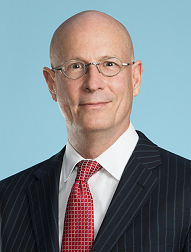
Spectrum Co. President John Hane has only been on the job for about two months and he already has his hands full running the show.
As head of the broadcast spectrum consortium founded by Sinclair, Nexstar and Univision, Hane is now up against the clock as broadcasters work to build on the promise of ATSC 3.0 to deliver improved over-the-air reception, immersive audio, deeper indoor reception, mobile reception, zoned programming/advertising, automotive services and advanced emergency alerting.
“It’s good. It’s drinking from a firehose,” Hane said, adding that Spectrum Co. is moving as fast as it can to progress the transition from ATSC 1.0 to 3.0 in conjunction with the incentive auction channel repacking process. “We’re jumping in headfirst.”
One of Hane’s primary responsibilities is Spectrum Co.’s single frequency network (SFN) trials in Dallas. Earlier this year, those tests brought on American Tower as a partner and more recently had Dish Network deploy its 700 MHz E Block spectrum as part of the tests.
During the NAB Show last week, Hane sat down with FierceVideo to discuss progress in Dallas, Dish’s involvement and the wireless opportunities of ATSC 3.0.
[The following transcript has been edited for length and clarity.]
FierceVideo: Can you give us a progress update on the Dallas SFN site? Is that the biggest priority right now for Spectrum Co.?
John Hane: Well there are a lot of priorities. Getting Dallas going is really important because there’s a lot that we want to learn, that we are learning. It’s not just what we expect to learn once it’s up and running but it’s about the process of getting 3.0 launched in a market apart from the SFN. It’s about the aspects of getting the participating stations together and how do you collect and redistribute the programming from the stations that are hosting 3.0 and 1.0 and how do you stack them and pack them. Just operational, on the ground, nuts-and-bolts best practices.
FierceVideo: Which next-gen services are you testing in that market right now?
Hane: Dish has fired up its spectrum, but we have not fired up the over-the-air programming on 3.0 in that market yet. We’re still working out a few planning factors, but that should be in the very near future, like this month. What we’ll be doing in the market is not only launching 3.0 and testing a whole range of evolved services that can be done in over-the-air broadcasting that don’t really work in 1.0, but we’re also going to be testing things like signal quality, how the system performs in different environments like noisy environments, deep indoors and moving vehicles; really challenging reception environments both fixed and mobile. Because the SFN is intended to improve the quality of service by evening out the signal levels throughout the service area.
FierceVideo: During an NAB panel, someone likened it to what wireless service providers are able to do. They’re able to fill in holes in their network coverage by deploying small cells and other technologies beside full-sized antennas. Is this similar?
Hane: It is similar although it helps us avoid having the holes in the first place. When you lay out the SFN, you’re looking at all the real-world propagation characteristics that you expect with that deployment. Hopefully you don’t have holes in the first instance. Broadcasters have been doing a rudimentary version of this for years, they have channel booster stations to cover areas that are within a terrain shadow. The purpose of this is not just to fill in holes. It’s to prevent holes in the first place.
SFNs also allow us to provide service that is usable in zones that previously would have been used just for interference protection, so we can expand the coverage area.
FierceVideo: How does Dish specifically fit in with the project and how does Dish benefit from using its spectrum?
Hane: Well I don’t want to make any statements for Dish because obviously I’m not Dish.
FierceVideo: Well, hypothetically then.
Hane: Dish, as everyone knows, has a huge spectrum portfolio and they’re looking at interesting ways to deploy it. I think where Dish fits in with Spectrum Co. and our Dallas deployment is, they have a significant cache of high-power spectrum that’s unpaired so it’s very good for downlink services that look very much like what our broadcasting services look like. They’re going to learn what we learn, we’re going to share information about performance and propagation and usable signal and everything else within the SFN environment. I can’t tell you exactly everything that they’re going to test, but we’ll be testing a range of things together. And certainly I hope we’ll move to the next step of looking at some of their spectrum as a possible integrated return path.
FierceVideo: Have you seen any interest from other wireless companies?
Hane: Yeah, we’ve had a fair number of calls. I’m not going to talk specifically about who we’ve talked to before it’s public. But yes, there’s a lot of interest, and unfortunately I haven’t had time to get to everything because I’ve just started.
The wireless ecosystem is growing, and it’s going to continue to grow. We’re really just at the beginning of it. So the traditional cellular networks that you see, even the 5G networks that are being planned, it’s just the tip of the iceberg. This is going to go on for decades. We’re going to constantly bring more spectrum online, we’re going to be upgrading the spectrum and the wireless economy is going to become radically more diverse.
We don’t expect to be all things to all people. We’re building a very sophisticated, primarily downlink network that will be available to the great majority of the population of the country, and we are experimenting with a lot of ways to make it fit into that wireless economy that we see. And we’re not tied to an existing business model.